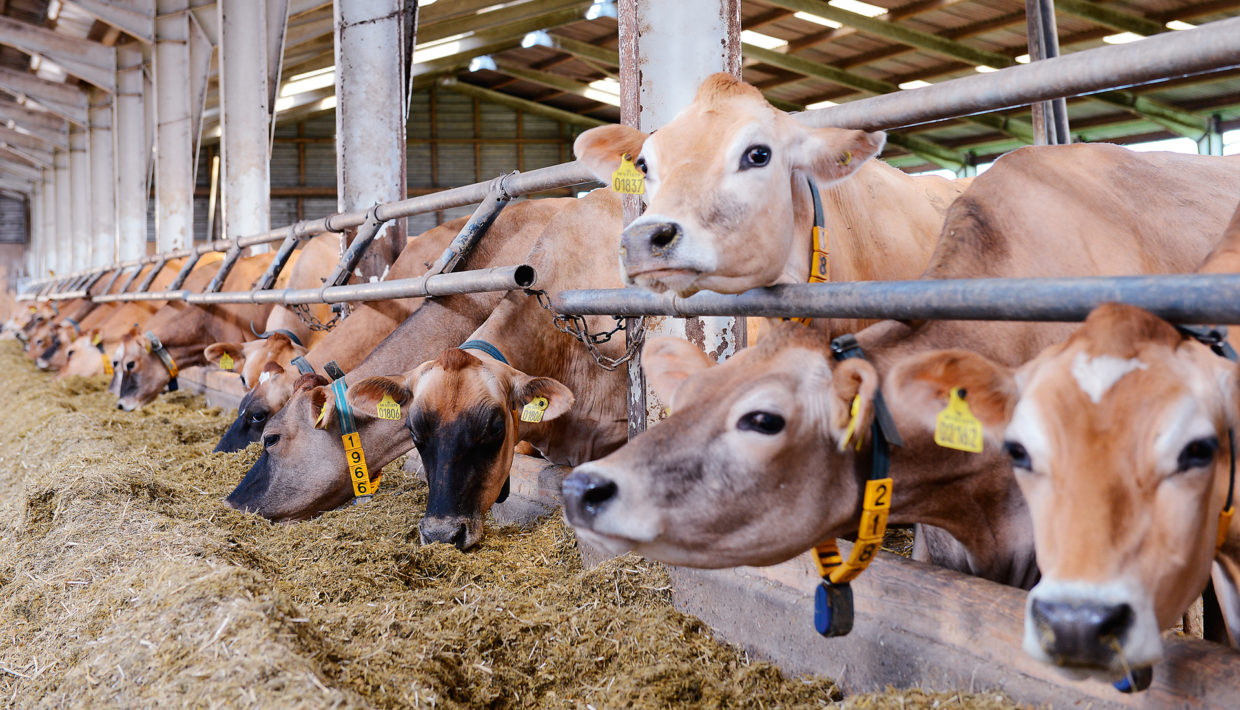“We’re sensitive when it comes to water”, says winegrower Andreas Hemer from Worms-Abenheim in southern Germany. And for good reason: the annual rainfall in this region is a measly 550l/m2. He and his brother Stefan therefore use efficient drip irrigation in times of drought on their organic vineyard. In 2012, the family business, with 36ha of vines and its own bottling station, built a new production hall outside the village centre. The developed area comprises about 1ha, of which around 2,000m2 is covered by a roof, which is fitted with photovoltaics on its sun-facing side.
Thinking long-term
“We want to collect the rainwater falling onto the roof in two large 50,000l cisterns”, explains Andreas Hemer. This water will be used mainly for mixing organic pesticides and to irrigate the hedges planted around the winery grounds. Rainwater that flows over the paved surfaces later seeps into a trench dug around the grounds.
Of course, another option would be to drill a well on the property, but this would mean drilling 80 to 100m deep. This isn’t cheap, according to Andreas Hemer, not to mention the strain it puts on the groundwater balance. However, the planned rainwater processing is not an investment that will pay off quickly.
“We’re thinking long-term. We’d like to supply our water ourselves as far as possible, similar to how we source our energy from woodchip heating and our electricity from photovoltaics”, he says. The Hemer brothers converted their farm to organic operations in 2003 and they are currently a member of the Ecovin association of organic winemakers. Furthermore, the less waste water from the farm that ends up in the public sewage system, the lower the fees for the energy-intensive treatment of this water.
We’d like to supply our water ourselves as far as possible.
Andreas Hemer
Rainwater as drinking water?
Speaking of energy, more and more experts are pointing out the strong link between water and energy, using the term “water-energy nexus” – when energy consumption increases, so does the need for water. Every dairy farmer knows the vast quantities of water required for cattle housed in the shed all year round. With a daily requirement of more than 100l per high-performance animal, a 200-cow operation accumulates a remarkable annual quantity of 7,300m3 of water. Cattle also usually consume drinking-quality water. What could be more logical than repurposing the water collected on the stall roofs for the thirsty animals?

Large cattle herds are often housed in cowsheds all year round: their drinking troughs thus use high amounts of water.
But there are some concerns to consider. “Cows require the best-quality water”, according to Dr. Peter Pascher, Director of Agricultural Structure and Regional Policy at the German Farmers’ Association. Mr Pascher believes that there are many arguments against the use of rainwater, such as for hygiene reasons (i.e. bacteria, contaminants and foreign substances). “Today, food production in Europe has very high quality requirements which could be jeopardised by the use of rainwater”, Mr Pascher adds. “And dairy producers are aware of this”. He fears that inadequate drinking water could also have far-reaching consequences for livestock health.
Pioneers in horticulture

Whether it’s decorative plants or vegetables in glasshouses: healthy plants need a sufficient and regular amount of water.
While only a small proportion of livestock farmers are working on long-term strategies for the local treatment of valuable water resources, even with comparably low water costs and despite increasingly evident climate change, greater strides have clearly been made in horticulture. “Rainwater processing is now being implemented by many operations”, notes Dr. Andreas Wrede gladly. Dr. Wrede, Lead Examiner at the Horticultural Centre of the Schleswig-Holstein Chamber of Agriculture, does not however deny that recycling without phytosanitary treatment is not recommended – even though it is expensive. “Everybody is aware that water prices will rise in the future and that it will also become harder to build wells”, observes the horticulture expert.
Mr Wrede also proposes another argument: “The use of rainwater has a further advantage. In contrast to hard tap water, rainwater comes for free and is also of a softer water quality, which has a positive effect on plant growth”. Mr Wrede hopes that in future, even more horticulturists, winegrowers and farmers will adopt new ways to conserve groundwater resources.
Especially as, in the face of a growing demand for food, there is no longer any doubt that agriculture, whether in Europe or elsewhere in the world, will need to handle water more efficiently in order not to upset the delicate water supply balance.
Thirsty plants
Greenhouse plants are quite thirsty: although it differs considerably depending on the plant, around 42m3 of water on average is required daily for 1,000m2 of cultivation. To scale reservoirs for tree nurseries and other horticultural operations appropriately, the following guideline figures apply: During the annual vegetation period, tree nurseries produce around 2kg of fresh wood mass per container area of 1m2. This requires about 550l of water. In order to meet this need with winter rainfall, an area of 1ha requires a reservoir with a volume of 3,500m3.
If rainwater is also collected during the summer, the reservoir volume could be reduced by up to a third with simultaneous filtering, according to the calculations of Andreas Wrede from the Horticultural Centre in Ellershoop, northern Germany. It’s not just collecting water that’s important for the water cycle however, but also the type of irrigation. While a rotation sprinkler uses around 100m3/ha and per day, drip irrigation requires only 20m3.
Further information
- Hemer family winery (Weingut Hemer)
- Nexus – a platform for resource security



